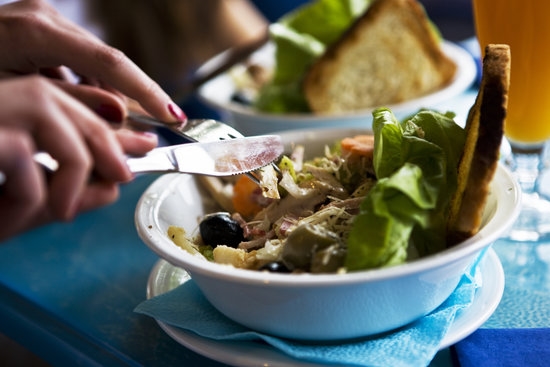Welcome back to Fitness Friday with Alicia Jones! Every Friday, she’ll be answering your questions about health, fitness and nutrition! Here are today’s questions from city residents.
Will I lose body fat more efficiently by exercising at a low or high intensity?
Calorie input versus calorie output! This is what weight loss is all about. The great news is, the way in which you receive your calorie deficit is completely up to you! When deciding what intensity is best, take into consideration the amount of time you have to allocate to fitness and your current fitness level!
The advantage of high intensity exercise (a heart rate greater than 80 percent), is that you can burn more calories in a shorter duration of time. Sounds great doesn’t it? But if you’re new to exercise, you suffer from a heart condition or, you feel fatigue easily, this form of workout can be taxing and counterproductive to your health!
Low intensity workouts can be great for beginners! A long walk is a great way to reduce stress (an accumulator of fat), and still achieve a calorie deficit. However, you really need to allocate more time to burn more calories. For example, a thirty minute high intensity jog can create a 225 calorie deficit; while a thirty minute low intensity walk only yields 90 to 100 calories!
At the end of the day, just remember, in order to burn one pound of fat you must accumulate a 3,500 calorie deficit. When coupled with proper nutrition, both high intensity and low intensity exercise can help you reach your goals!
Can I still workout even if I have aches and pains?
The question is what kind of aches and pains are you feeling?
Arthritis can be a major cause of aches and pains. Research demonstrates that exercise can actually reduce discomfort, create greater mobility in the joints, and give you an overall better quality of life. This advice also rings true to inactivity. Stiffness caused by an inactive lifestyle can be resolved simply by working out!
If your aches and pains come from a previous workout you may want to take a day off. Muscle fibres have probably been damaged and need time to repair. The reparation process can only occur if we give our muscles the much needed rest they deserve. If you’re still feeling aches and pains 72 hours after your initial exercise, do a lighter routine to get the muscles warm and the blood flowing!
Should I be eating three meals a day, or small meals throughout the day?
The general nutrition guideline is five to six small meals a day. Why? Because it keeps your blood sugar levels stable throughout the day. Energy slumps are mainly due to low blood sugar levels and when our blood sugar levels are low, we become so ravenously hungry, we can eat up to two times more food than is recommended!
Also, frequent meals keep our metabolism fast and active! Our body is so fascinatingly efficient; it physically slows our metabolic rate when meals are infrequent. So to keep our engines revving, and our energy levels high eat frequently and enjoy!
 Alicia Jones is the owner of Destination Fit and can be reached via e-mail or by calling 647-233-7827. Don’t forget to check Alicia out in the May/June edition of Spirit of the City in our Spirit of Enterprise issue!
Alicia Jones is the owner of Destination Fit and can be reached via e-mail or by calling 647-233-7827. Don’t forget to check Alicia out in the May/June edition of Spirit of the City in our Spirit of Enterprise issue!
Submit your questions to @mississaugalife!

